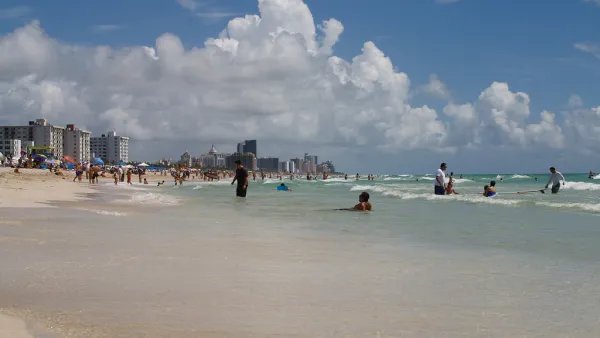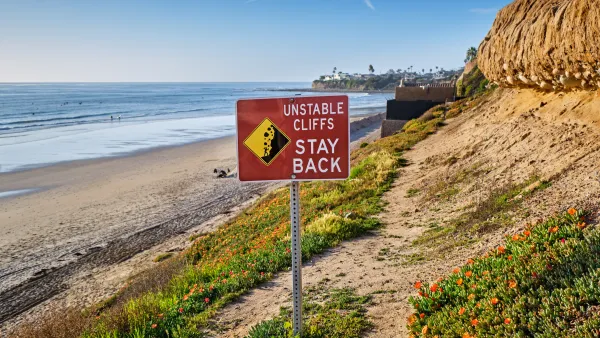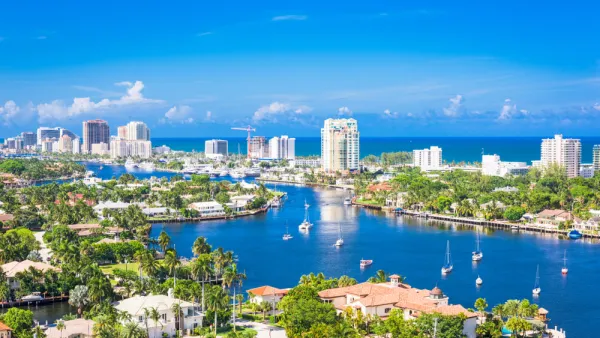How did the seven square mile, four-foot high barrier island in the Atlantic Ocean off Miami and Biscayne Bay hold-up to Hurricane Irma? The city arguably has done more to adapt to sea level rise in recent times than any other coastal city.

A post on September 14, largely written prior to Irma's first landfall on Sept. 10 on Cudjoe Key, part of the barrier reef islands known as the Florida Keys, and second landfall later that day on Marco Island, also a barrier island, in the Gulf of Mexico in southwest Florida, strongly suggested that barrier islands were best left undeveloped:
Barrier islands serve a critically important ecological purpose by preventing ocean swells and other storm events from disrupting water systems on their mainland sides, protecting the coastline.
"As the first line of defense during storms that threaten coastal communities, barrier islands are very important for reducing the devastating effects of wind and waves and for absorbing storm energy," according to the National Oceanic and Atmospheric Administration (NOAA) of the U.S. Department of Commerce.
Miami Beach dodged a bullet, or in the words of Mayor Phillip Levine on CNN on Sept. 11, "dodged a cannon," when Hurricane Irma veered westward, sparing southeast Florida a direct hit as had initially been forecasted on Sept. 8, it still endured flooding along with much of Miami-Dade County.
As initially posted, Miami Beach has been preparing for sea level rise, flooding, and storm surge for several years.
After he took office, in November of 2013, Levine fast-tracked a program to install electric pumps along Alton Road and other prime flooding spots on the city’s west side so that, during a storm surge or high tide, the pumps can be switched on, suctioning water off the streets and out into Biscayne Bay
In a conversation with CNN's Wolf Blitzer on Sept. 11, he tells how the adaptations fared:
And what we found is that during this historic high tide that we experienced with this tidal surge, all those areas that we improved were absolutely dry.
So for us, we are very excited. It was a success. But once again, you never declare victory against mother nature.
Levine adds that he believes Miami Beach is "a model for other cities" and serves as a reminder that investment is needed "in coastal cities to make them resilient because these weather events...are the new normal."
FULL STORY: Miami Beach: Model for Coastal Cities Adapting to Climate Change?

Analysis: Cybertruck Fatality Rate Far Exceeds That of Ford Pinto
The Tesla Cybertruck was recalled seven times last year.

National Parks Layoffs Will Cause Communities to Lose Billions
Thousands of essential park workers were laid off this week, just before the busy spring break season.

Retro-silient?: America’s First “Eco-burb,” The Woodlands Turns 50
A master-planned community north of Houston offers lessons on green infrastructure and resilient design, but falls short of its founder’s lofty affordability and walkability goals.

Test News Post 1
This is a summary

Analysis: Cybertruck Fatality Rate Far Exceeds That of Ford Pinto
The Tesla Cybertruck was recalled seven times last year.

Test News Headline 46
Test for the image on the front page.
Urban Design for Planners 1: Software Tools
This six-course series explores essential urban design concepts using open source software and equips planners with the tools they need to participate fully in the urban design process.
Planning for Universal Design
Learn the tools for implementing Universal Design in planning regulations.
EMC Planning Group, Inc.
Planetizen
Planetizen
Mpact (formerly Rail~Volution)
Great Falls Development Authority, Inc.
HUDs Office of Policy Development and Research
NYU Wagner Graduate School of Public Service




























